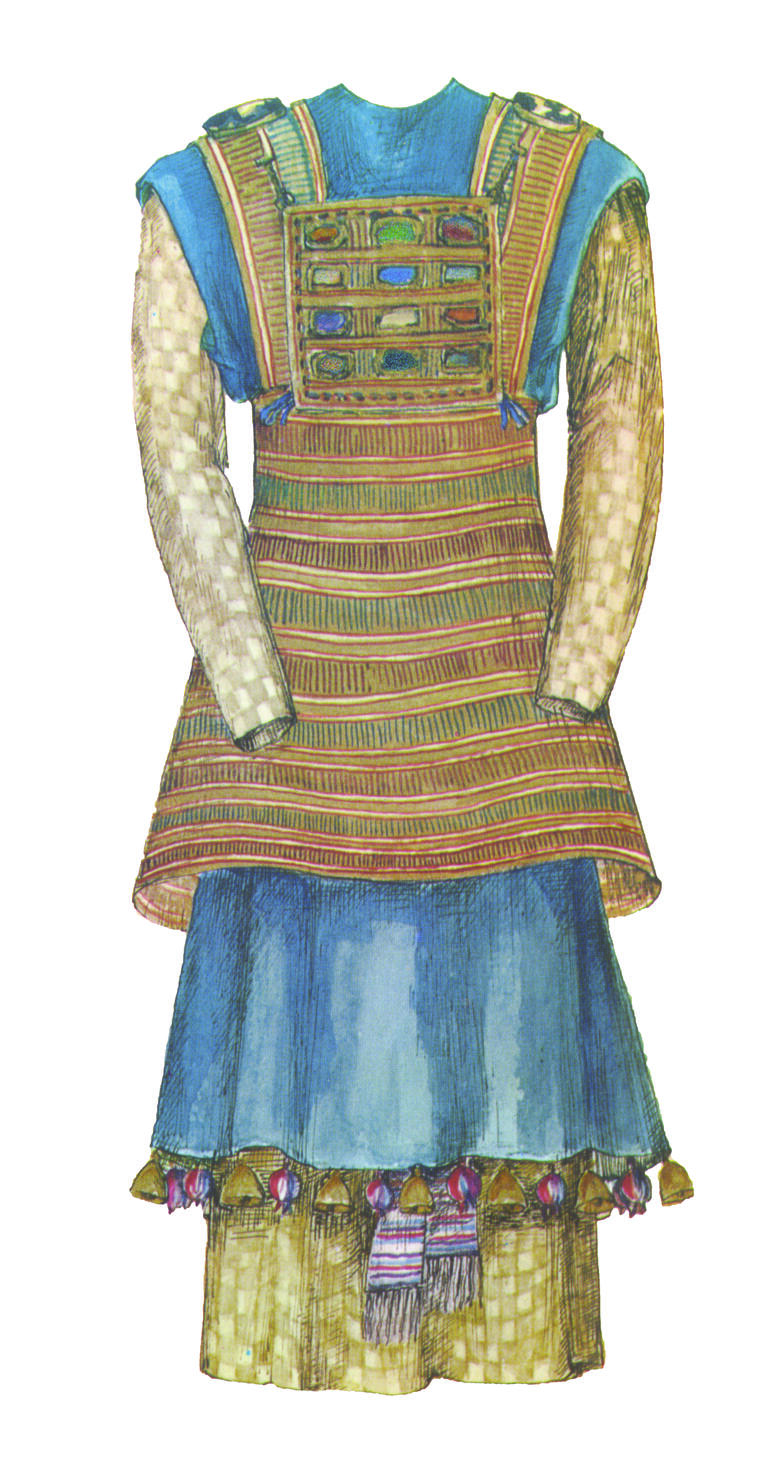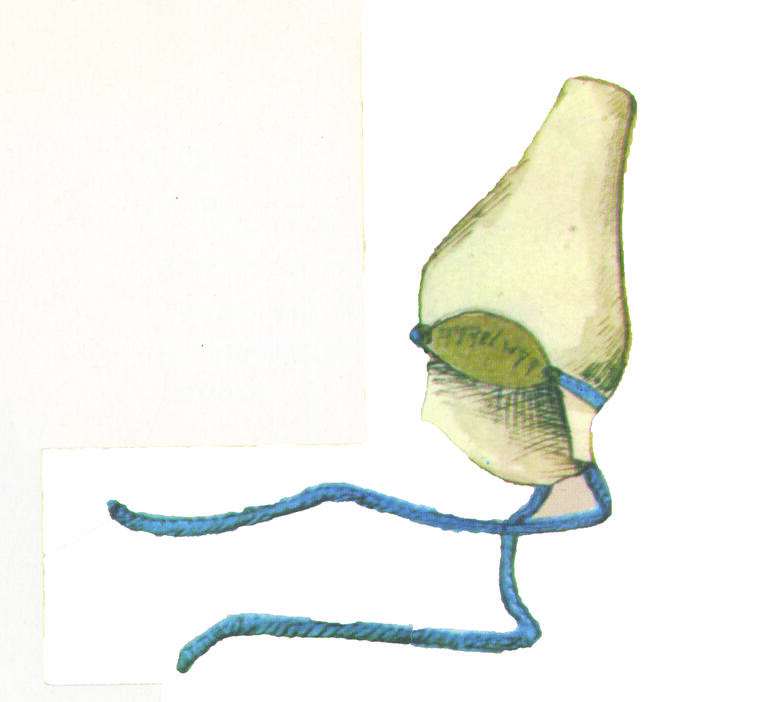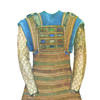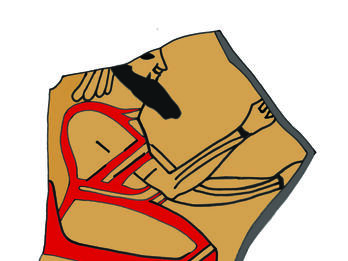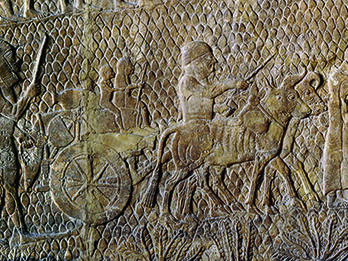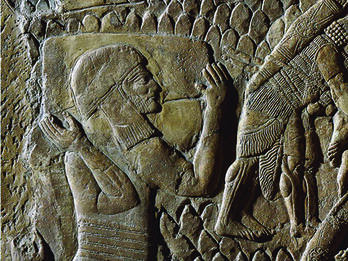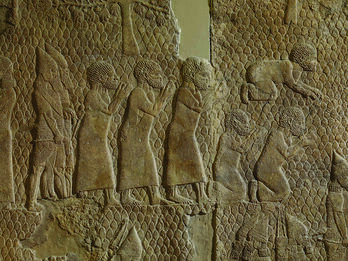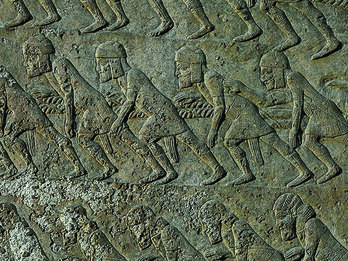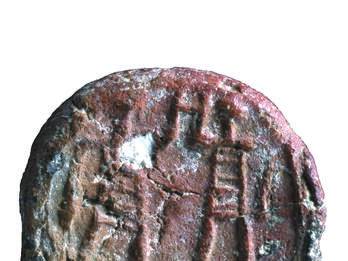The High Priest’s Garments
A detailed description of the priests’ sacral vestments in Exodus 28 provides written evidence of sacred dress and adornment, although neither archaeological evidence nor pictorial representations for such garments have been uncovered. Exodus 28 indicates that such vestments are to bestow “dignity and honor” (verses 2 and 40) upon the wearer, suggesting an appreciation for their aesthetic dimension. This artist’s rendering of the priests’ vestments depicts the tunic, sash, robe, and headdress and, most prominently, the ephod (a term of uncertain meaning sometimes translated as “apron”), the breastplate, and the golden frontlet, which was attached to the front of the headdress. The ephod, the breastplate, and the sash were to be fashioned of the sacred combination of linen and wool (shaatnez). The ephod is described as made of gold, as well as of blue, purple, and crimson yarns and of fine twisted linen, worked into designs, with alternating pomegranates made of the colored yarns and golden bells attached to its hem. Two lapis lazuli stones bearing the names of the twelve tribes of Israel were to be placed in gold frames and attached to the shoulder-pieces of the ephod. The breastplate consisted of twelve precious stones, each engraved with the name of one of the tribes, set in gold. This was in turn attached to the ephod by gold chains and blue cords. The frontlet consisted of a golden plate engraved with the words “Holy to the Lord” that was attached to the front of the headdress by a blue cord.
Credits
-
Drawing by Eva Avi-Yonah. Courtesy of Reuven Avi-Yonah.
-
Drawing by Eva Avi-Yonah. Courtesy of Reuven Avi-Yonah.
Published in: The Posen Library of Jewish Culture and Civilization, vol. 1.


